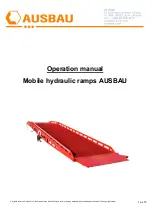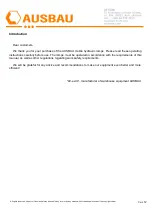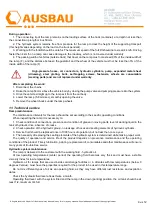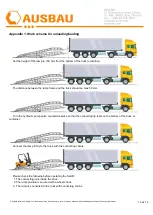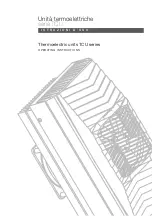
All rights reserved. No part of this manual may be used in any form or by any means without written permission of the copyright owner.
9
из
12
During operation:
1. The connecting lip of the ramp remains on the loading surface of the truck (container) at a depth not less than
the connection lip length minus 50mm.
2. The hydraulic system remains free from pressure for the ramp to track the height of the supporting transport
(this height varies depending on the load on the truck pendant).
3. Working with the forklift should be careful. The maximum speed of the forklift should not exceed 4 km/h. Driving
faster than 4 km/h on a ramp can cause damage to the roadway, which is not covered under warranty.
4. The passing width of vehicles (outside track) that travel on the ramp must not exceed 90% of the inside width of
the ramp (F), and the distance between the guardrail and the wheel of the vehicle must not be less than 5% of the
inside width of the ramp (F).
High-pressure hoses, oil, connectors, hydraulic cylinders, pump, expanded metal sheet
(driveway), steel grating, bolts, self-tapping screws, fasteners, wheels are consumable
(wearing parts) and are not replaced under warranty.
After completing the work:
1. Disconnect the chains.
2. Raise the ramp 50 mm above the vehicle body by closing the pump valve and pumping pressure into the system.
3. Drive the vehicle straight up to the ramp exit from the car body.
4. Lower the ramp (5-8 mm/sec), smoothly opening the valve.
5. Remove the wheel chocks under the ramp wheels.
11. Technical service
Ramp maintenance
The maintenance intervals for the ramp should be set according to the specific operating conditions.
When inspecting the ramp it is necessary to:
1. Check condition of connections, presence and condition of grease in moving parts, level of working liquid in the
tank of hydraulic drive, absence of cracks.
2. Check operation of the hydraulic group - no leakage of hoses and sealing elements of hydraulic cylinders.
3. Service fluid should be replaced once in 1000 hours of operation, but not less than once a year.
4. The necessity of replacing the sealing elements of the hydraulic system is determined while making repair work.
The quality of operation and service life of the product depends on preventive maintenance and the operating
conditions of the product. Timely lubrication, painting, replacement of consumables and other maintenance will ensure
many years of trouble-free service.
Hydraulic system maintenance
The ramp is delivered to the customer with the working fluid - hydraulic oil.
At low operating temperatures (winter period) the operating fluid becomes very thick and must have a stable
viscosity index for low temperatures.
Hydraulic oil for ramps that are used inside cold storage facilities or in climates with low temperatures (below 0
degrees Celsius), must have the properties required for the product to be used in this temperature range.
Do not mix different types of oil as an operating fluid, as they may have different rust resistance and expiration
dates.
Check the hydraulic fluid level at least twice a month.
Operating fluid level:
with the system filled and the ramp in the down (parking) position, the oil tank should be at
least 1/2, maximum 3/4 full.

